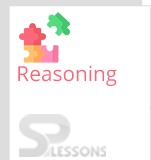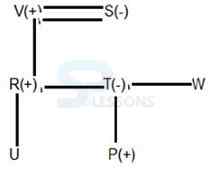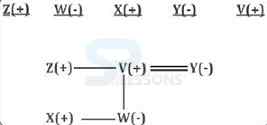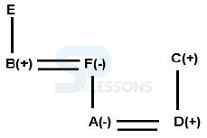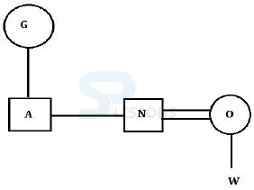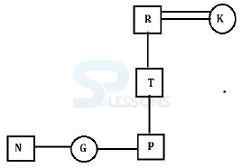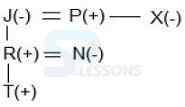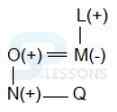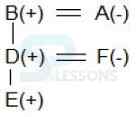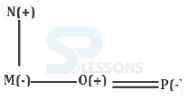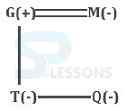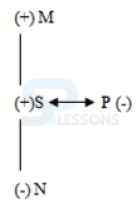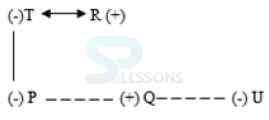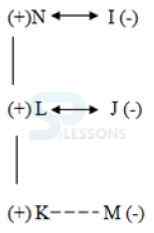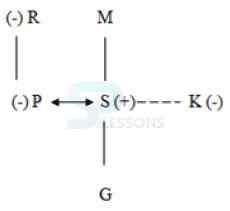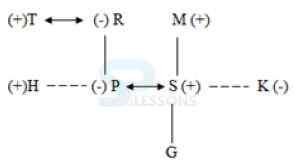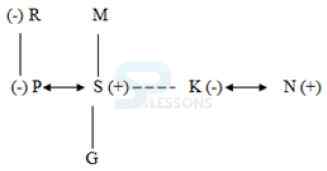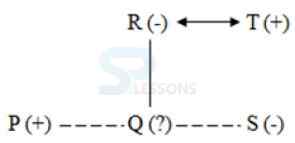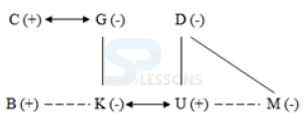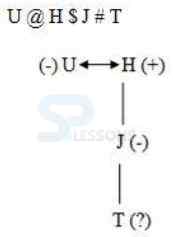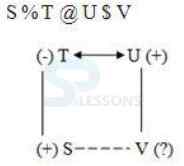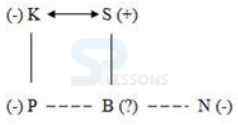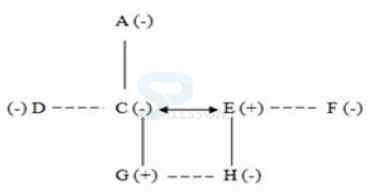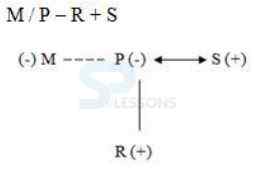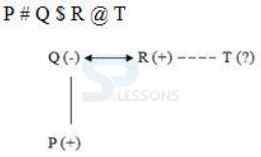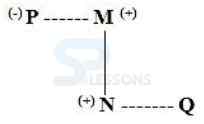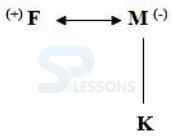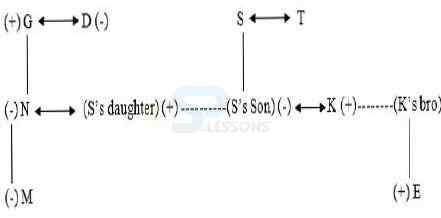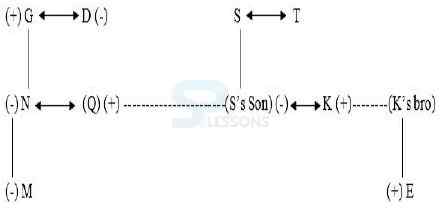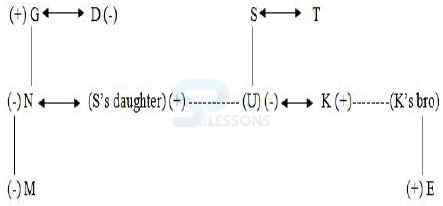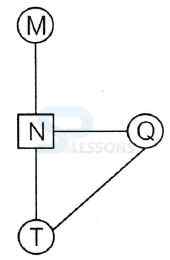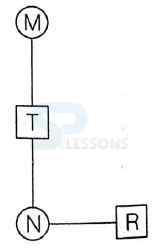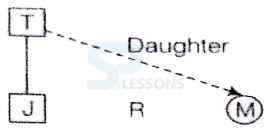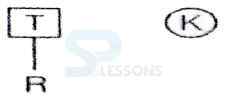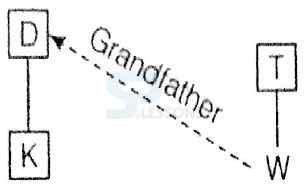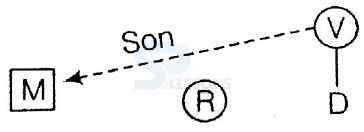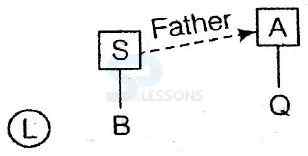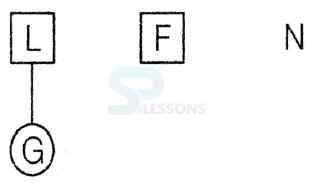 Introduction
Introduction
Blood relation is an important topic keeping in view the competitive exams. Blood relation shows the different relations among the members of a family. Based on the information given, students need to find relation between particular members of the family. Blood Relations Practice Quiz questions aid in mastering the concept of blood relations.
Table of Blood Relations:
Important Blood Relations:
| Generation | Male | Female |
|---|---|---|
| Three generations above ↑↑↑ | Great grandfather Maternal great grandfather Great grandfather-in-law | Great grandmother Maternal great grandmother Great grandmother-in-law |
| Two generations above ↑↑ | Grandfather Maternal grandfather Grandfather-in-law | Grandmother Maternal grandmother Grandmother-in-law |
| One generations above ↑ | Father, Uncle, Maternal uncle, Father-in-law | Mother, Aunt Maternal aunt, Mother-in-law |
| Current generation (Self) → | Husband, Brother Cousin, Brother-in-law | Wife, Sister Cousin, Sister-in-law |
| One generation below ↓ | Son Nephew Son-in-law | Daughter Niece Daughter-in-law |
| Two generations below ↓↓ | Grandson Grandson-in-law | Grand daughter Grand daughter-in-law |
| Three generations below ↓↓↓ | Great grandson Great grandson-in-law | Great grand daughter Great grand daughter-in-law |
| Father of grandfather or grandmother | Great grandfather |
| Mother of grandfather or grandmother | Great grandmother |
| Father of father or mother | Grandfather |
| Mother of father or mother | Grandmother |
| Wife of grandfather | Grandmother |
| Husband of grandmother | Grandfather |
| Father-in-law of father/mother | Grandfather |
| Mother-in-law of father/mother | Grandmother |
| Father’s father/mother only | Father |
| Only daughter-in-law of father’s father/ father’s mother | Mother |
| Husband of mother | Father |
| Wife of father | Mother |
| Second wife of father | Step mother |
| Brother of father | Uncle |
| Brother of mother | Maternal Uncle |
| Sister of father | Aunt |
| Sister of mother | Maternal Aunt |
| Husband of aunt | Uncle |
| Wife of uncle | Aunt |
| Son of grandfather/ grandmother | Father/ Uncle |
| Daughter of father-inlaw/ mother-in-law of father | Mother/ Aunt |
| Father of wife/ husband | Father-in-law |
| Mother of wife/ husband | Mother-in-law |
| Children of same parents | Siblings |
| Father’s/ Mother’s only son/ daughter | Oneself |
| Son of father or mother | Brother |
| Daughter of father or mother | Sister |
| Son of second wife of father | Step brother |
| Daughter of second wife of father | Step sister |
| Son/ daughter of uncle/ aunt | Cousin |
| Brother of husband or wife | Brother-in-law |
| Sister of husband or wife | Sister-in-law |
| Husband of sister/sister-in-law | Brother-in-law |
| Son of father | Oneself/ Brother |
| Mother of son/daughter | Oneself/ Wife |
| Father of daughter/ son | Oneself/ husband |
| Son of son of grandmother/ grandfather | Brother/ Oneself/ Cousin |
| Daughter of son of grandmother/ grandfather | Cousin/ Oneself/ Sister |
| Son of brother or sister | Nephew |
| Daughter of brother/ sister | Niece |
| Grandson of father/ mother | Son/ Nephew |
| Granddaughter of father/ mother | Daughter or Niece |
| Husband of daughter | Son-in-law |
| Wife of brother/ brother-in-law | Sister-in-law |
| Wife of son | Daughter-in-law |
| Son of son/ Daughter | Grandson |
| Daughter of son/ Daughter | Granddaughter |
| Son’s/ Daughter’s grandson | Great Grandson |
| Son’s/ Daughter’s granddaughter | Great granddaughter |
 Quiz
Quiz
Directions (1–3): Read the following information carefully and answer the questions given below:
P is son of U’s father’s sister. R is son of S, who is the mother of T and grandmother of U. V is the father of W and grandfather of P. S is wife of V. T is sister of R.
Q1. How is P related to S?
- (a) Grandfather
(b) Grandson
(c) Son
(d) Uncle
(e) None of these
- (a) Nephew
(b) Uncle
(c) Son
(d) Father
(e) None of these
- (a) Niece
(b) Sister
(c) Sister – in – law
(d) Mother
(e) Mother – in – law
- (a) Father
(b) Mother
(c) Brother
(d) Can’t be determined
(e) None of these
- (a) Mother
(b) Father
(c) Brother
(d) Can’t be determined
(e) None of these
- (a) Father
(b) Mother
(c) Son
(d) Father in law
(e) None of these
- (a) R + P × W = T ÷ S
(b) R + C – M × J ÷ S
(c) S ÷ D + H = F = R + G
(d) R = Y – L ÷ N = S
(e) none of these
- (a) Mother
(b) paternal-grandmother
(c) mother-in-law
(d) Aunt
(e) Cannot Determine
- (a) L × M + N ÷ P @ Q – J – T =F
(b) L × M + N ÷ P @ Q – J × T = F
(c) F × M + N ÷ P @ Q – J × T = L
(d) L + M + N ÷ P @ Q – J × T = F
(e) None of these
- (a) Father
(b) Grandfather
(c) Grandmother
(d) mother
(e) None of these
Directions (1–3): Study the following information and answer the given question.
Y has a son and a daughter. P is the son of M.T is the mother of J. Y is the father of U. U is the daughter of T. Q is the son of D. T is the sister of D, who is married to P.
Q1. How is P related to T ?
- (a) Brother
(b) cannot be determined
(c) Brother-in-law
(d) Cousin brother
(e) Uncle
- (a) Son
(b) Niece
(c) Son-in-law
(d) Nephew
(e) Daughter
- (a) Son-in-law
(b) Grandson
(c) Nephew
(d) Son
(e) Cannot be determined
- (a) sister
(b) grandmother
(c) daughter
(d) aunt
(e) none of these
- (a) sister
(b) brother
(c) daughter
(d) brother
(e) Can’t be determined
- (a) sister
(b) grandfather
(c) daughter
(d) niece
(e) none of these
- (a) B # A & D % E @ F
(b) A & D % E * B # F
(c) A & D & E # F @ B
(d) A @ B # D # E & F
(e) none of these
- (a) daughter-in-law
(b) son-in-law
(c) grandmother
(d) grandfather
(e) none of these
- (a) Brother
(b) Son –in-law
(c) Father
(d) Son
(e) None of these
- (a) Mother
(b) Sister
(c) Wife
(d) Daughter
(e) None of these.
Directions (Q.1-3): Read the following information carefully and answer the questions given below.
P+Q means P is mother of Q
P- Q means P is mother of Q
P/ Q means P is sister of Q
P*Q means P is wife of Q
P%Q means P is son of Q
1). If ‘M+S+N%P’, then how is M related to N?
- a) Grandson
b) Maternal grandmother
c) Paternal grandmother
d) Granddaughter
e) None of these
- a) Father
b) Mother
c) Son
d) Daughter
e) None of these
- a) N*I-L- K/M%J
b) N*I-L+K/M%J
c) I-L+K/M+N%J
d) N*I-L- K/M+J
e) None of these
- a) Son
b) Daughter
c) Granddaughter
d) Grandson
e) Cannot be determined
- a) Sister
b) Sister-in-law
c) Niece
d) Cannot be determined
e) None of these
- a) Son-in-law
b) Daughter-in-law
c) Mother-in-law
d) Father-in-law
e) None of these
- a) Brother
b) Cousin
c) Son
d) Cannot be determined
e) None of these
- a) Sister
b) Niece
c) Daughter
d) Cannot be determined
e) None of these
- a) Son
b) Daughter
c) Either son or daughter
d) Date inadequate
e) None of these
- a) Daughter
b) Daughter-in-law
c) Granddaughter
d) Son-in-law
e) None of these
- a) Paternal Grandmother
b) Paternal Grandfather
c) Maternal Grandfather
d) Maternal Grandmother
e) Data Inadequate
- a) Only I and II follows
b) Only II and III follow
c) Only I and III follow
d) None follows
e) All follows
- a) Son
b) Daughter
c) Either son or daughter
d) Data Inadequate
e) None of these
- a) Niece
b) Sister
c) Daughter
d) Cannot be determined
e) None of these
- a) Son
b) Brother
c) Cousin
d) Data Inadequate
e) None of these
- a) Grandson
b) Granddaughter
c) Son
d) Cannot be determined
e) None of these
- a) 4
b) 5
c) 3
d) Data Inadequate
e) None of these
- a) Mother
b) Wife
c) Sister
d) Cannot be determined
e) None of these
- a) T is the sister of R
b) R is an aunty of P
c) T is the brother-in-law of Q
d) P is the daughter of R
e) None is true
- a) R is the uncle of M
b) P is the cousin of R
c) M is the nephew of P
d) Q is the uncle of M
e) None is true
- a) Q - N + M x P
b) P + S x N – Q
c) P - M + N x Q
d) Q - S % P
e) None of these
- a) F5M3K
b) F9M4N3K
c) F3M5N3K
d) F3M5K
e) None of these
- a) Son
b) Son -in- law
c) Grandson
d) Brother
e) Father
- a) Father
b) Mother
c) Sister
d) Grandmother
e) Cannot be determined
- a) Brother
b) Uncle
c) Cousin
d) Brother-in-law
e) Data inadequate
Direction (1-5): Read the information carefully and answer the following questions.
If A+ B means A is the father of B
If A× B means A is the sister of B
If A$ B means A is the wife of B
If A% B means A is the mother of B
If A÷B means A is the son of B
1). What should come in place of question mark (?), to establish that J is the brother of T in the expression? J ÷ P % H ? T % L
- a) ×
b) ÷
c) $
d) Either ÷ or ×
e) Either ÷ or +
- a) L % R $ D + T×M
b) L + R $ D + M × T
c) L % R % D + T ÷ M
d) D + L $ R + M×T
e) L $ D ÷ R % M ÷T
- a) L is the daughter of T
b) K is the son-in-law of I
c) I is the grandmother of L
d) T is the father of J
e) J is the brother of L
- a) W % L×T×Y÷X
b) W + L× T ×Y÷X
c) X + L× T×Y÷W
d) W $ X+ L+Y+T
e) W % X× T×Y ÷ L
- a) ÷
b) %
c) ×
d) $
e) Either $ or ×
- a) Mother
b) Father
c) Brother
d) Can’t be determined
e) None of these
- a) Son
b) Daughter
c) Niece
d) Nephew
e) None of these
- a) Q
b) K
c) H
d) P
e) None of these
- a) Son-in-law
b) Daughter-in-law
c) Father-in-law
d) Granddaughter
e) Niece
- a) Father
b) Son
c) Mother
d) Cousin
e) Grandfather
- a) T is N’s daughter
b) N is wife of Q
c) M is mother in law of Q
d) Q is wife of N
e) T is granddaughter of M
- a) B is the son of A
b) A is the son of C
c) B is the father of A
d) C is the mother of B
e) B is the daughter of A.
- a) M * T $ N @ R
b) M * T $ R @ N
c) M * R $ T @ N
d) M * R @ T @ N
e) None of these
- a) M + N ÷ J – T
b) T – J x R + M
c) M – J x T ÷ K
d) M + W x R ÷ T
e) None of these
- a) Daughter
b) Sister
c) Niece
d) Cannot be determined
e) None of these
- a) D – K x T – W
b) D ÷ K x T ÷ W
c) D – K x T ÷ W
d) D ÷ K x T – W
e) None of these
- a) R x S ? T means R is the granddaughter of T
b) P= Q ? R means R is the grandmother of P
c) L $ M * O means O is the sister of L
d) M * O £ P = Q means Q and O are husband and wife
e) All are correct
- a) V x T * P means P is the maternal uncle of V.
b) D ? V x T means D is the granddaughter of T
c) L £ M $ R means R is the paternal uncle of L
d) M $ R * D? V means M is the son of V
e) None is correct
- a) M x A = N = B
b) B $ L x O x A
c) B x L x A
d) L * B = S $ Q = A
e) None of these
- a) G x L $ F $ N
b) N $ F $ L x G
c) G x M * F $ L
d) L = F $ Q £ G
e) None of these
- a) P
b) Z
c) Y
d) X
e) Q
- a) One
b) Two
c) Three
d) Four
e) Five
- a) P and X
b) P and Z
c) Q and X
d) R and Y
e) None of these
- a) Uncle
b) Sister
c) Niece
d) Cousin
e) None of these
- a) 6
b) 5
c) 4
d) 3
e) 2
